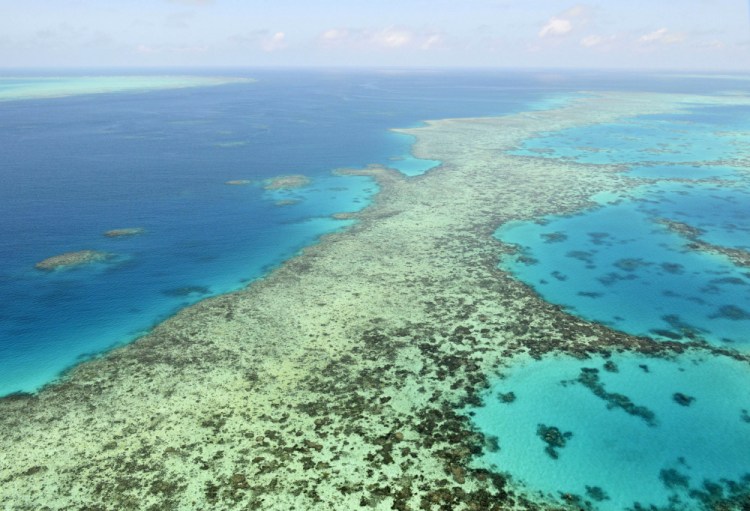Australia’s Great Barrier Reef is experiencing its sixth massive bleaching event as climate change has warmed the ocean, raising concerns over whether one of the world’s most famous natural wonders is nearing a tipping point.
Reef managers confirmed Friday that aerial surveys detected catastrophic bleaching on 60 percent of the reef’s corals. The discovery is particularly disturbing, researchers said, because a cooling La Niña weather pattern in the ocean usually offsets warming that stresses coral and causes them to lose color.
“This is a first mass bleaching event during a La Niña,” said Emily Darling, a coral reef conservation scientist who directs coral reef conservation for the Wildlife Conservation Society. “It continues to reinforce that with extreme heat waves and water getting too hot, corals are losing their recovery windows – those times between bleaching events when we know corals can recover.”
Unusually high ocean temperatures, up to 7 degrees Fahrenheit above normal, likely triggered the event. It is the sixth massive bleaching the reef has suffered in two decades and the fourth since 2016. Back-to-back bleaching events in 2016 and 2017 affected two-thirds of the world’s largest reef.
“The pace at which bleaching events are now occurring on the Reef is a matter of huge concern,” Australia’s Great Barrier Reef Foundation said in a statement. “It clearly highlights the importance of transitioning rapidly to a low-carbon economy.
“It is too early to know the level of long-term damage that the bleaching has caused,” the foundation added, “because many corals will recover once thermal stress declines. However, based on what’s happened in the last five years, we would expect to see severe coral mortality in the shallowest regions of the worst affected reefs.”
The Great Barrier Reef is made up of 3,000 reefs that supported thousands of species of marine plants and animals. Although bleaching leads to scarring and death, the group added, parts of the reef can “begin to recover as coral communities re-grow and new coral larvae settle on the reef.”
Two years ago, researchers who analyzed the health of reef’s coral populations since 1995 concluded that warming has killed off half of them – and that these colonies may never recover.
John “Charlie” Veron, a renowned expert who has dived the Great Barrier Reef for 45 years and is known as “The Godfather of Coral,” is now predicting their extinction.
“It’s the beginning of a planetary catastrophe,” Veron told CNN. “I was too slow to become vocal about it.”
Darling said she understands why Veron’s prediction is dire. He’s watching the decline of a resource he observed at its peak, continuing over the course of half his life, she said. But even as reefs and the fish that rely on them decline, she’s more hopeful.
“We know corals are resilient just like so much of nature but we have to give them a fighting chance,” Darling said. She advocates three conservation strategies: protect cool water refuges around the world where coral reefs thrive, become a lot more aggressive about helping reefs recover between bleaching events and stop relying on reefs for fishing and tourism when they are clearly in decline.
“In my 15 years of diving, I’ve been fortunate to dive on reefs around the world,” Darling said. “I’ve seen extraordinary reefs. It’s what you expect to see and it’s still there.”
Copy the Story LinkSend questions/comments to the editors.



Success. Please wait for the page to reload. If the page does not reload within 5 seconds, please refresh the page.
Enter your email and password to access comments.
Hi, to comment on stories you must . This profile is in addition to your subscription and website login.
Already have a commenting profile? .
Invalid username/password.
Please check your email to confirm and complete your registration.
Only subscribers are eligible to post comments. Please subscribe or login first for digital access. Here’s why.
Use the form below to reset your password. When you've submitted your account email, we will send an email with a reset code.